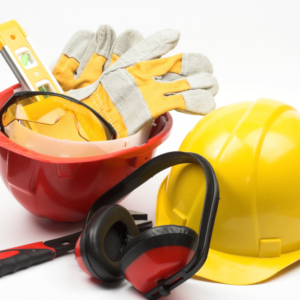When it comes to occupational safety, many people think of hard hats, gloves, and protective eyewear. However, one often overlooked aspect of workplace safety is protecting your eyes from harmful ultraviolet (UV) rays. Whether you work outdoors or spend long hours indoors under artificial lighting, choosing the right UV-protected glasses for work is crucial for maintaining eye health and comfort. In this blog, we’ll guide you on how to select the most suitable UV-protected glasses to keep your eyes safe during work.
1. Assess Your Work Environment
The first step in choosing UV-protected glasses for work is to assess your work environment. Consider whether you work predominantly indoors or outdoors and the nature of your tasks. Outdoor workers, such as construction workers, landscapers, and farmers, are exposed to direct sunlight and need glasses with robust UV protection. Office workers, on the other hand, may require glasses that protect against UV rays from artificial lighting and computer screens.
2. UV Protection Rating
When selecting UV-protected glasses for work, prioritize those with a high UV protection rating. Look for glasses labeled as UV 400, which provides 100% protection against UVA and UVB rays. This level of protection is essential, especially for outdoor workers who face prolonged sun exposure.
3. Lens Material
The choice of lens material can significantly impact your comfort and safety at work. Common lens materials for UV-protected glasses include polycarbonate, CR-39, and glass:
- Polycarbonate: Lightweight, impact-resistant, and ideal for jobs that involve the risk of flying debris or particles.
- CR-39: Offers excellent optical clarity and is suitable for tasks that require precise vision.
- Glass: Provides exceptional clarity but is heavier and less impact-resistant, making it better suited for indoor work.
Select a lens material that aligns with your work environment and the potential hazards you might encounter.
4. Lens Tint and Coating
The tint and coating of your UV-protected glasses can enhance your visual comfort and safety. For indoor workers exposed to artificial lighting and screens, consider glasses with an anti-reflective (AR) coating to reduce glare and eye strain. Outdoor workers may benefit from a tint that enhances contrast and reduces glare, such as brown or copper.
- Gray: Reduces brightness without distorting colors, making it ideal for general outdoor use.
- Brown/Amber: Enhances contrast and is great for activities like fishing or golf.
- Yellow: Increases visibility in low-light conditions, making it suitable for overcast days.
5. Frame Style and Fit
Comfort and fit are essential when choosing UV-protected glasses for work. Look for frames that are comfortable for extended wear and don’t pinch or press on your temples or ears. Additionally, frames with adjustable nose pads or flexible temples can provide a customized fit, ensuring your glasses stay securely in place during work.
6. Prescription Needs
If you require prescription glasses, don’t compromise on UV protection. Many brands offer prescription UV-protected glasses, allowing you to combine vision correction with eye safety. Consult your eye doctor to ensure your prescription is up-to-date and accurate.
7. Compliance with Safety Standards
For certain professions, like construction or industrial work, specific safety standards may apply. Ensure that your UV-protected glasses meet these standards to guarantee optimal eye protection during work. Look for certifications like ANSI Z87.1 for workplace safety.
Protecting your eyes from UV radiation during work is essential for maintaining eye health and comfort. By assessing your work environment, choosing glasses with a high UV protection rating, selecting the right lens material and tint, ensuring a comfortable fit, and considering any prescription needs or safety standards, you can confidently select the most suitable UV-protected glasses for your specific work requirements. Remember that your eyes are invaluable, and investing in proper eye protection is an investment in your long-term well-being.


